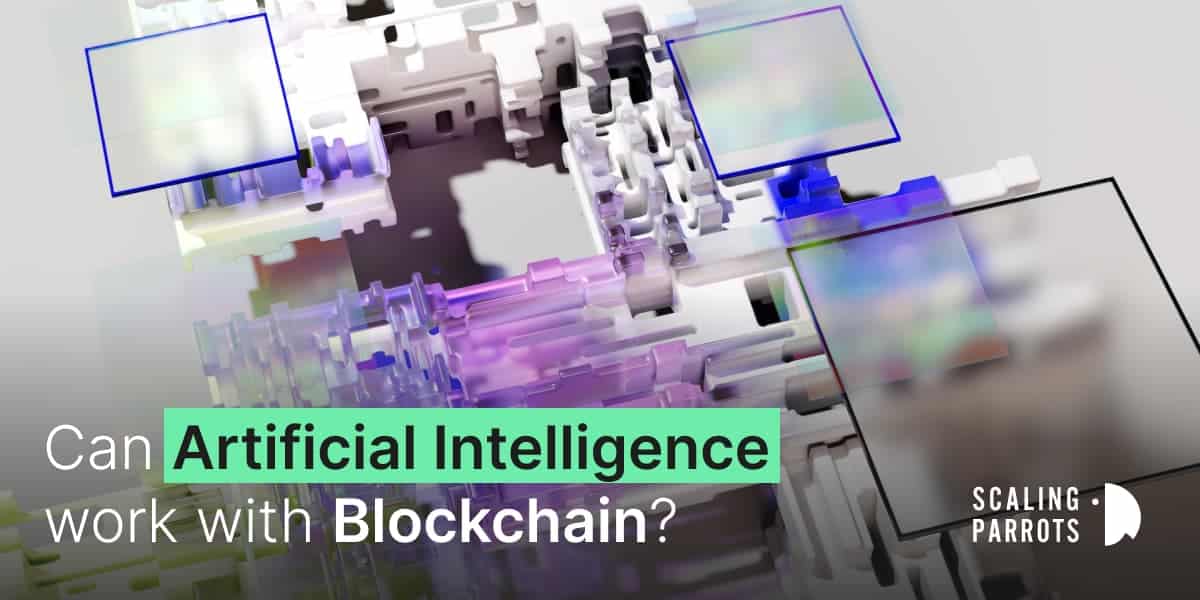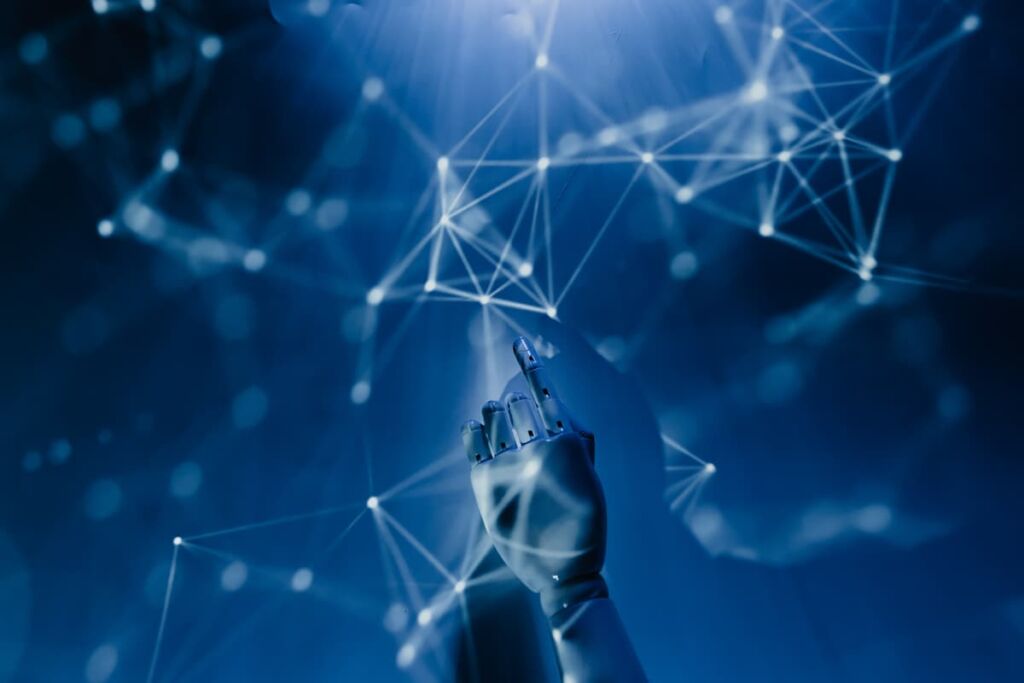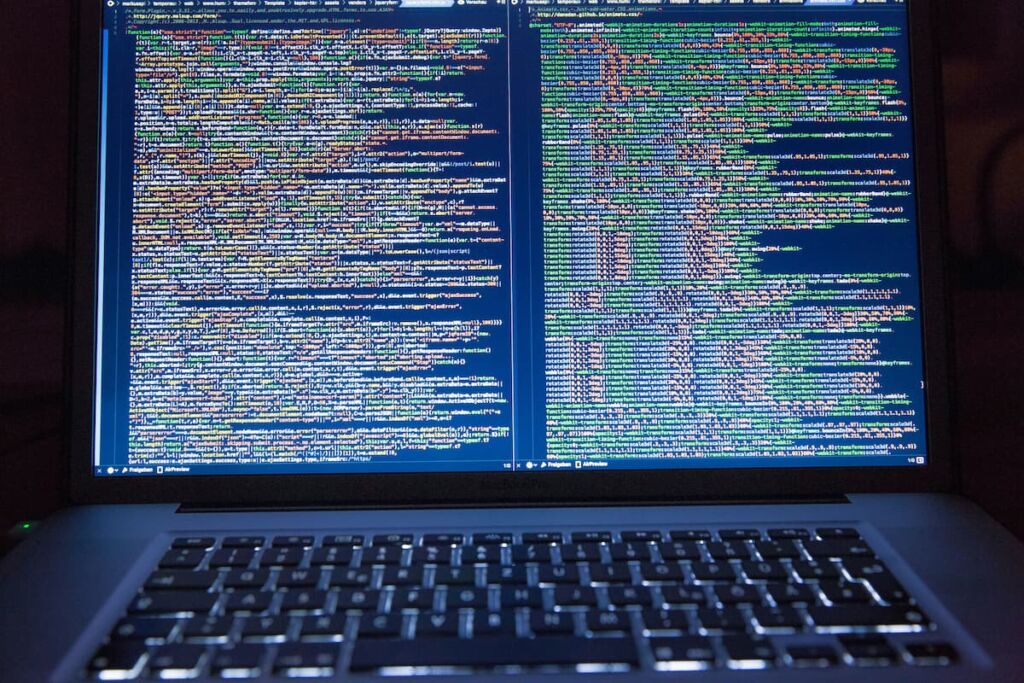
One of the most disruptive technologies is artificial intelligence (AI), which has drastically changed how we live, work, and communicate. Another disruptive technology is the Blockchain.
Every business is being improved by combining AI and Blockchain, from healthcare record sharing and food supply chain logistics to media royalties and financial security; Blockchain and artificial intelligence are improving everything.
The combination of AI and Blockchain has an impact in numerous areas, including security. Using Blockchain with AI will provide a second layer of defense against cyber-attacks.
With the help of AI, it is possible to efficiently mine through large datasets, develop novel scenarios, and identify trends in data behavior. Blockchain makes it easier to remove corrupt data sets and bugs successfully.
The world is changing, and businesses that successfully adapt to digital transformation will thrive. AI and Blockchain are two emerging technologies set to change how things are in the world as we know it.
However, there’s often confusion about how these two technologies interact — do they work together or compete? Are they mutually exclusive or complementary? Let’s look at how AI and Blockchain can work together in different scenarios.
What is Blockchain
Blockchain is a distributed ledger, an immutable database that facilitates asset tracking and transaction recording in a business network. Almost anything of value can be recorded and traded on a Blockchain network, lowering risk and increasing efficiency for all parties involved.
What is Artificial Intelligence (AI)
Definition: Artificial intelligence is a technology that enables machines and computer applications to learn from experience through iterative processing and algorithmic training.
AI is a type of intelligence used to solve problems, find solutions, answer questions, make predictions, or make strategic recommendations.
AI has become extremely important to modern businesses and organizations because it can do all these things.
The benefits of AI include the automation of repetitive tasks, improved decision making and an enhanced customer experience.
How Blockchain works
As each transaction occurs, it is documented as a “block” of data; those transactions demonstrate the transfer in the case of a tangible (a product) or intangible asset (resource).
Any information you desire can be saved in the data block, including who, what, when, where, and even the condition — for example, the temperature of a food shipment.
Each block is linked to the ones that came before and after it. These blocks form a data chain when an asset is moved from one location to another or when ownership changes.
The blocks are securely linked together to prevent any blocks from being altered or an additional block from being introduced between two existing blocks. The blocks certify the precise timing and order of transactions.
A Blockchain is a secure sequence of transactions that are linked together. Every new block strengthens the previous block’s verification and the Blockchain as a whole. This provides the Blockchain with its critical strength of immutability and makes it tamper-proof.
By doing so, you and other network users can construct a trusted ledger of transactions, eliminating the possibility of tampering by malicious parties.
To see how Blockchain and AI can work together, let’s see the different types of Blockchain and their use cases.
Types of Blockchain
There are four types of Blockchains which are:
1. Public Blockchain
Which is also known as open Blockchain; these Blockchains are entirely open to the concept of decentralization. There are no restrictions; anyone with a system and internet access is welcome to join.
Use Cases: Public Blockchains can replace existing financial systems since they are safeguarded by proof of stake or proof of work. The more advanced aspect of the Blockchain is the smart contract which made it possible for this Blockchain to support decentralization. Examples of public Blockchain are Ethereum and Bitcoin.
2. Private Blockchain
These Blockchains lack the decentralization of the public Blockchain, which is more secure than the others because only a limited number of nodes can participate in the process. Few persons can engage in a network within a firm or organization where these Blockchains are administered.
Use Cases: With sufficient security and maintenance, this Blockchain is a fantastic asset for protecting information without making it publicly visible. As a result, companies use them for internal audits, voting, and asset management. Hyperledger and Corda are two instances of private Blockchains.
3. Hybrid Blockchain
It consists of a mixture of private and public Blockchain content, where some portions are under the authority of a single company, and others are made publicly accessible.
Use Case: It offers a better answer to the government, real estate, finance, and healthcare sectors. It provides a way out of situations where data must be secure privately but accessible to the public. The XRP cryptocurrency and the Ripple network are two examples of hybrid Blockchains.
4. Consortium Blockchain
It is an innovative strategy that meets the organization’s needs. The transaction is validated by this Blockchain, which also sends or receives transactions.
Use Cases: Businesses, banks, and other payment processors have a lot of possibilities for it. The organizations’ food monitoring is a federated solution that is perfect for them to use because they constantly work with their sectors. Tendermint and Multichain are two examples of consortium Blockchains.
Importance of Blockchain
Information is the lifeblood of the modern economy, so it is best to receive it quickly and accurately.
Blockchain is the best technology for conveying that information because it provides real-time, shareable, and completely transparent data stored on an immutable ledger and available only to members of a network.
A Blockchain system can track:
- orders,
- payments,
- accounts,
- production,
among other things. Furthermore, because everyone has access to the same version of the truth, you can see every aspect of a transaction from start to finish, increasing your confidence and opening up new opportunities.
Because all confirmed transactions are permanently stored and cannot be changed, all network participants must agree that the data is accurate. No one, not even the system administrator, can delete or modify a transaction.
How does AI work?

AI systems learn from patterns and features in the data they analyze by combining vast volumes of data with intelligence and iterative processing techniques.
An AI system tests and evaluates its performance after each round of data processing to improve.
Because AI doesn’t require breaks, it can do hundreds, thousands, or even millions of tasks very quickly, quickly picking up a lot of knowledge and excelling at whatever work it is trained to complete.
The key, though, is to grasp that AI isn’t just a particular computer program or application but an entire discipline or science.
AI science aims to create a computer system capable of replicating human behavior and employing human-like thinking to solve complex problems.
To accomplish this goal, AI systems use a wide range of diverse technologies, as well as a long list of methods and procedures, to achieve this goal.
How do AI and Blockchain technology complement each other?
Blockchain is an expensive means of storing large amounts of data the old-fashioned way. The Bitcoin Blockchain’s one-megabyte block size makes storing larger data on it extremely expensive.
Data is kept on a decentralized storage media to address this problem. This storage medium hashes the data, connects it to the Blockchain blocks or uses the smart contract code internally.
When Blockchain and artificial intelligence technologies are combined, decentralized AI apps and algorithms may be created with access to the same trusted and shared data platform that will be used to store your knowledge, records, and decisions.
This platform is helpful if you maintain accurate records of all the AI algorithms before, during, and following the learning and decision-making process.
What is the benefit of combining Blockchain with AI?
Over the last few years, research has indicated a connection between Blockchain and AI. Although both technologies have historically operated independently, things are gradually changing.
The vast amount of data generated by AI devices is a fundamental factor in why we discover that most AI applications are moving into the big data space.

When it comes to business, handling data is a crucial concern, and Blockchain and AI working together can significantly improve data management and other data-related issues. In a Blockchain, the data will be divided into smaller pieces and dispersed around the network.
There is no central authority for governing the data. Each computer will maintain a complete copy of the ledger to prevent data loss. Blockchain is the better option if you want an ecosystem for private data that uses AI processing and provides a better user experience.
The data, for instance, gives a thorough overview of everything related to the health sector in the healthcare industry. You can analyze, find, diagnose, and prevent diseases using this large amount of data.
Different businesses may be impacted by Blockchain and AI, which also offers a flexible means of obtaining privacy, energy, security, scalability, and control over data regulation.
To improve data performance, efficiency, and accuracy, AI uses machine learning. On the other hand, Blockchain searches for power and energy to operate a network of computers. The procedure is slicker and more practical when Blockchain and AI are combined.
Interlinking of Blockchain technology and AI
AI and Blockchain technology are closely related in many ways. The main integrations are listed below:
1. Transparent Data Source: You need much data to train an AI program. Blockchain is the most transparent technology, making it a trustworthy source of finely honed data. The data source may be efficiently verified due to the traceability of nodes.
2. Autonomous System: The decentralized ledger technology ensures that no single server takes care of the AI application’s operations. The autonomous system drives the decentralization for managing AI training and operations without supervision.
3. Protection of Privacy: The network that supports AI operations and training is more secure, thanks to cryptographic methods. You can train and provide AI systems because they are competitive and have increased complexity when you have a robust privacy mechanism.
4. Distributed Computing Power: A significant amount of firepower is needed to train and maintain AI. Blockchain technology assumes this duty and facilitates its resolution. The space needs, including hardware and software, storage, and maintenance expenses, are also taken care of.
5. Security: The smart contracts on the Blockchain lack sufficient security. The rigidity of the contract, around which the Blockchain revolves, is what makes it easy to disrupt applications when there are flaws. AI is utilized to develop more secure smart contracts to reduce such vulnerabilities.
6. Reading efficiency: Blockchains frequently have limitations due to poor query performance and limited data storage options. With level DB-a write-intensive DMS, the Blockchain applications give up reading efficiency to adopt a more write-intensive strategy.
The data storage techniques support the use of Blockchain while utilizing AI. AI finally aids in accelerating data query speeds after extensive testing and training.
7. Authenticity: Blockchain’s digital ledger addresses the issues with explainable AI and offers insights into the AI framework and the source of the data used. You get more confidence in the accuracy of the data and the AI’s recommendations as a result.
It provides an audit trail and combines Blockchain and AI to improve data security while utilizing Blockchain for storing and distributing AI modes.
8. Automation: Blockchain, AI, and automation will offer newer benefits to business processes involving multiple participants, such as minimizing friction and boosting speed and efficiency. Blockchain smart contracts with AI models built in them are used to resolve conflicts and choose the most environmentally friendly shipping options.
Real-life application of Blockchain and AI
The following are real-life applications of Blockchain and AI:
- Health services: AI can boost nearly every area of healthcare, from exposing treatment insights and supporting user demands to finding insights from patient data and showing patterns. With the use of electronic health records and patient data on the Blockchain, institutions may collaborate to improve care while preserving patient privacy.

In the pharmaceutical industry, Blockchain and AI have the potential to significantly raise the success rates of clinical trials and increase the visibility and traceability of the drug supply chain. Combining cutting-edge data analysis with a decentralized architecture for clinical trials makes it possible to automate trial participation and data collecting while maintaining data quality, transparency, patient tracking, and consent management.
- Financial Services: Blockchain and AI are changing the financial service industry by building trust, eliminating friction from multiparty transactions, and increasing the speed of transactions. Think of the borrowing procedure.

Applicants permit access to personal data kept on a Blockchain. Faster closings and higher customer satisfaction are facilitated by processes that evaluate applications automatically and confidently in the data.
Conclusion
In a nutshell, AI and Blockchain can work independently, but when integrated together, they enforce each other and, in reality, have improved everyday life.
Blockchain brings data while AI brings intelligence to read those data accurately, and AI feeds on these data resulting in trust and confidence in the system.
See you soon,
Scaling Parrots
